Discover the various types of yarn cones in this comprehensive guide, as we unravel their unique characteristics and uses for your knitting and weaving projects.
Are you a crochet or knitting enthusiast who loves to experiment with different types of yarn? If so, you may have noticed that yarn cones come in various shapes and sizes. Each type of cone has its unique features and benefits, making it an essential tool for your crafting projects.
In this blog post, we will explore the different types of yarn cones available in the market and their uses. Whether you are a beginner or an experienced crafter, this guide will help you choose the best yarn cone for your next project.
So, grab your favorite cup of tea and let’s dive into the world of yarn cones!
What Is a Yarn Cone?
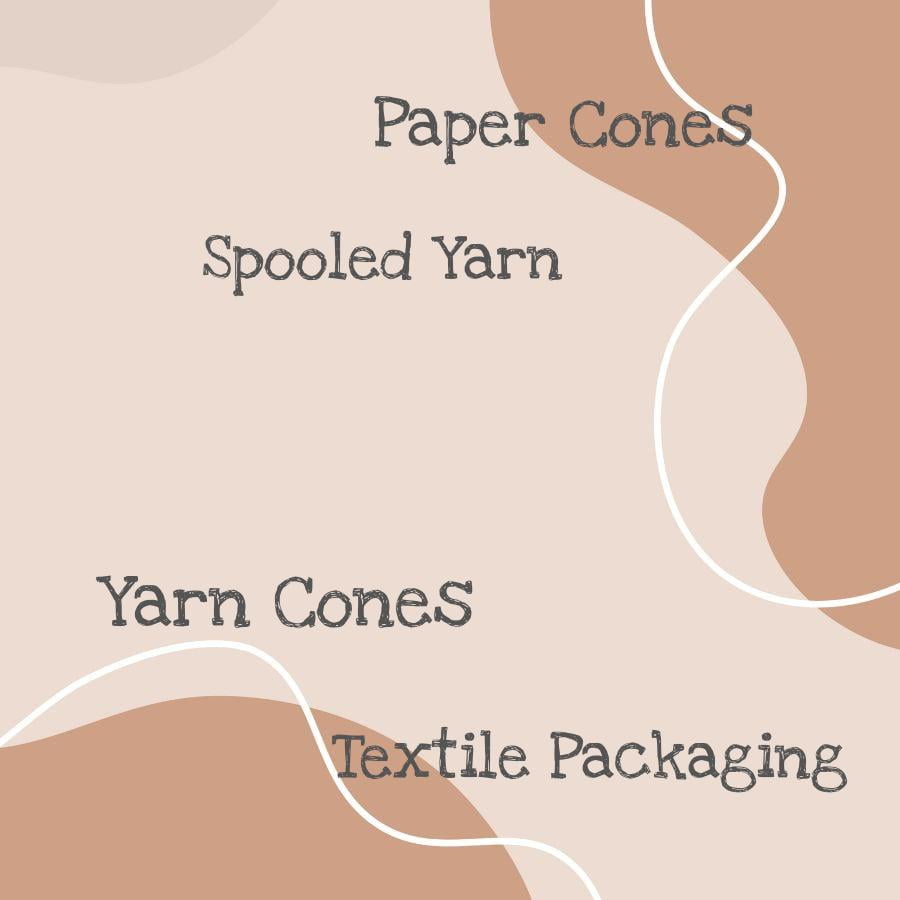
It is usually made of paper, plastic, or cardboard and comes in various sizes and shapes. Yarn cones are used to store and transport large quantities of yarn efficiently.
They are commonly used by manufacturers who produce bulk amounts of yarn for commercial purposes.
Yarn cones have a conical shape with a pointed top that allows the thread to unwind smoothly without tangling or knotting during use. The base has an opening where the end of the thread can be pulled out easily while knitting or weaving.
The size and weight capacity vary depending on their intended use; some can hold up to 10 pounds (4 kg) while others only hold small amounts suitable for home crafting projects.
Yarn Bobbins and Yarn Spools
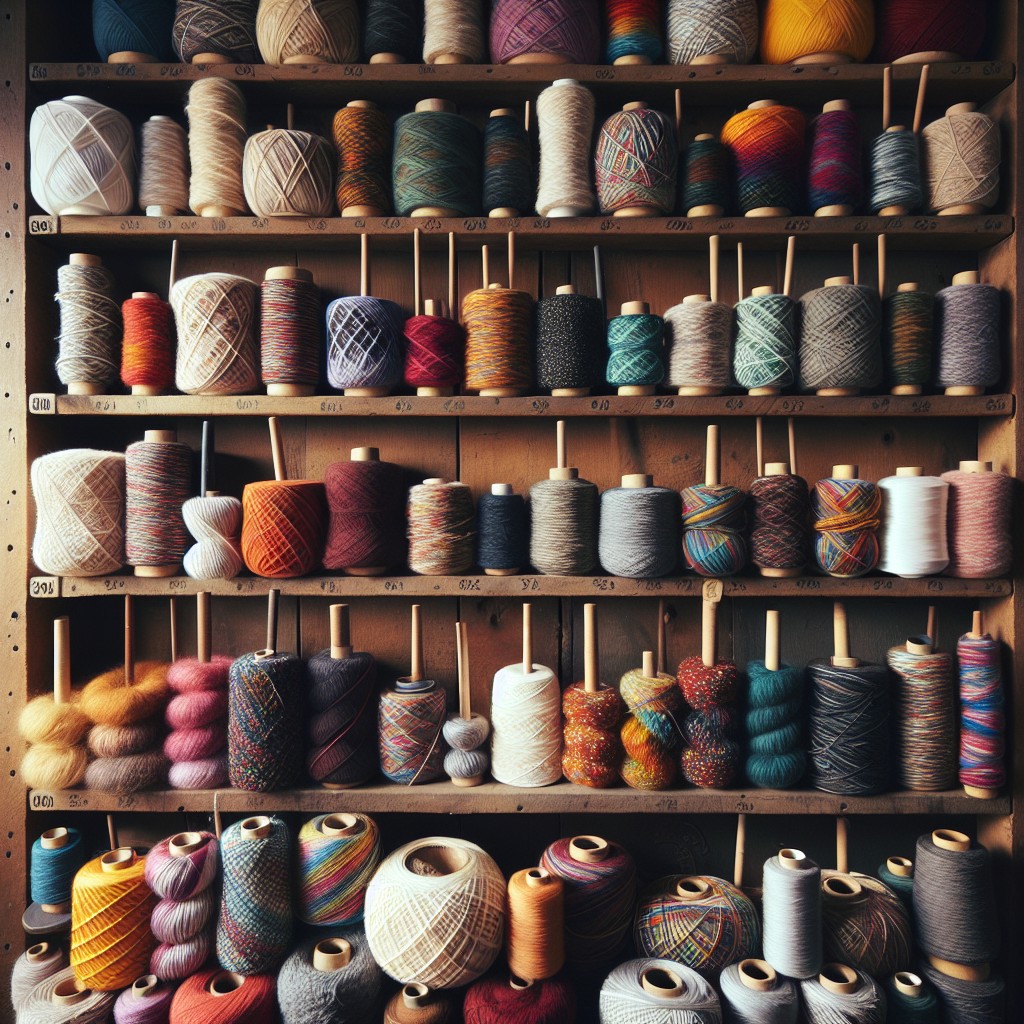
Yarn bobbins are small, cylindrical-shaped cones made of plastic or wood. They hold a smaller amount of yarn compared to other types of cones and are ideal for projects that require multiple colors or when working with fine threads.
On the other hand, yarn spools have a larger capacity and can hold more significant amounts of thread. They come in various shapes such as cylindrical, cone-shaped, or flat-sided tubes made from materials like plastic or cardboard.
Both these types have their unique advantages depending on the project at hand. For instance, if you’re working on an intricate design with many color changes involved – using several small-sized bobbin holders would be more practical than one large cone holder.
In contrast, if you’re weaving a blanket where long stretches need to be covered without interruption – then opting for larger-sized spool holders would make sense since they can carry more thread per unit time before needing replacement!.
Why Yarn Cones Are Made
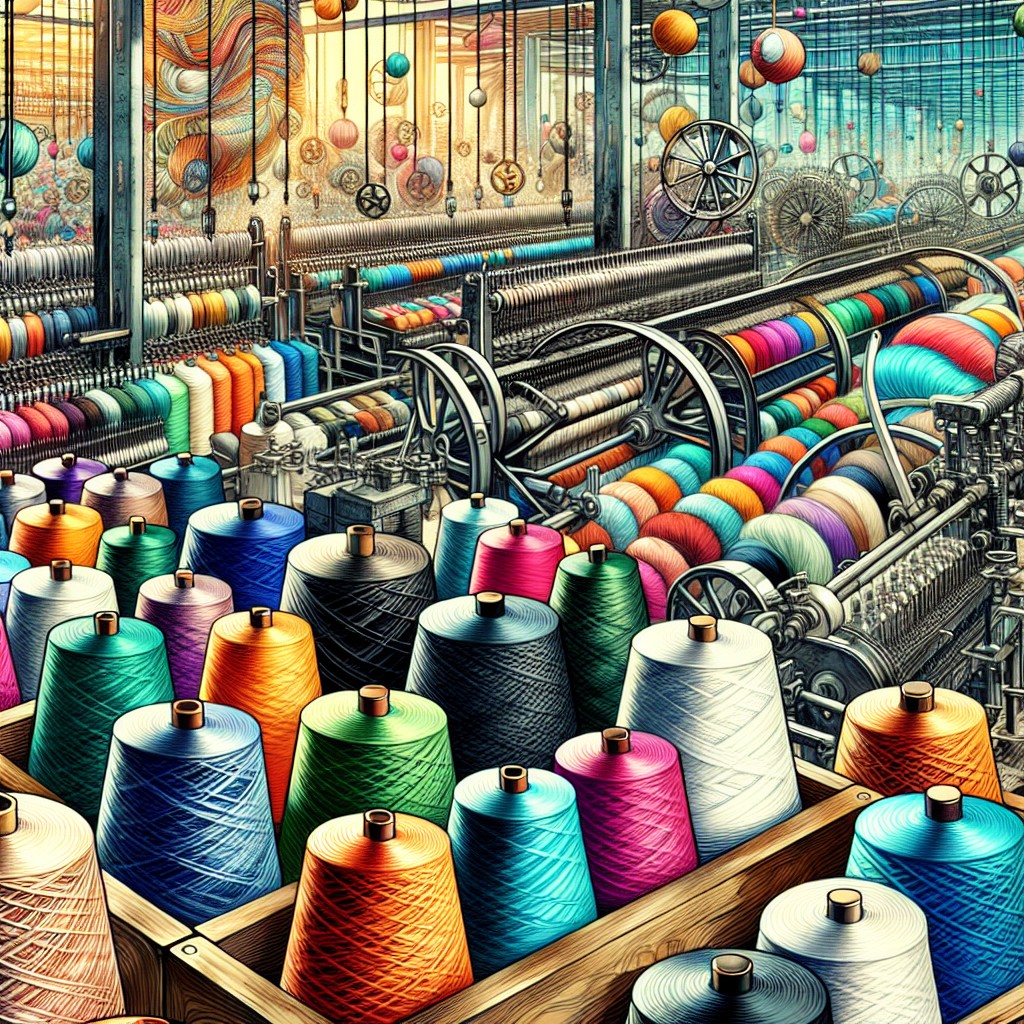
They come in various shapes and sizes to suit different needs. But why are yarn cones made? Yarn cones serve several purposes that make them a popular choice among crafters.
Firstly, yarn cones help to organize the thread or yarn during production. The cone shape allows the thread or yarn to unwind smoothly without tangling or knotting up as it would on a spool.
Secondly, they provide an efficient way of storing large quantities of threads or fibers in one place while taking up minimal space compared to other forms of packaging like skeins and hanks.
Thirdly, using a cone makes it easier for machine knitting since the machines can pull from larger amounts without stopping frequently for new supplies.
Lastly but not least important is that they reduce waste by allowing every inch of fiber on each cone used before moving onto another one which saves time spent changing out spools when working with large projects such as blankets where multiple colors may be needed at once!.
Using Yarn Cones
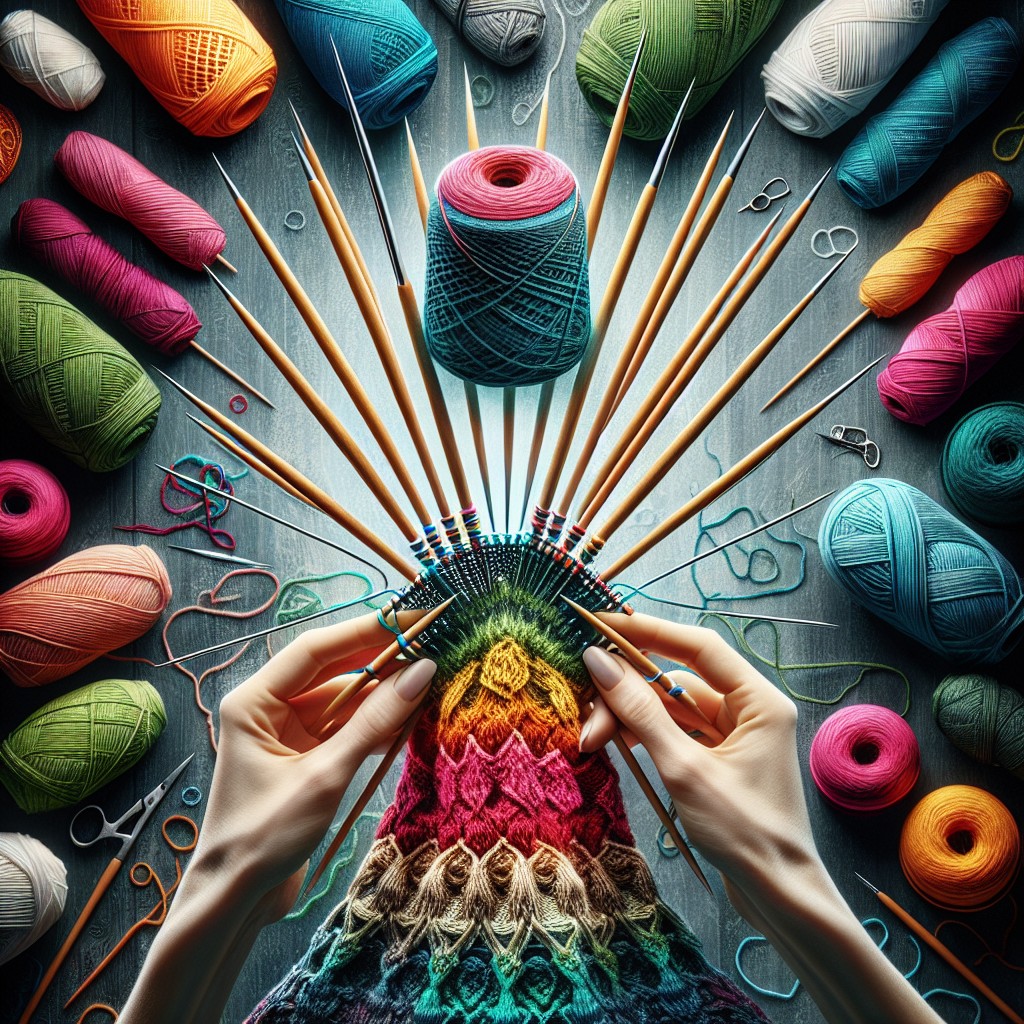
They come in various sizes and shapes, making them suitable for different types of yarn. Using a yarn cone has several benefits, including reducing the number of knots and tangles in your work.
When using a yarn cone, it is crucial to ensure that the thread flows smoothly from the top without getting tangled or knotted. To achieve this, place your cone on a spindle holder or use an adjustable stand to keep it steady while you work.
Another advantage of using yarn cones is that they hold more thread than traditional skeins or balls of wool. This means you can complete larger projects without having to stop frequently to change threads.
However, when working with large cones of heavy-weighted threads like cottons and wools may require extra care as they tend to be heavier than other materials used in crocheting and knitting projects; hence their weight could cause tension issues if not handled correctly.
The Pros of Spooled Yarn
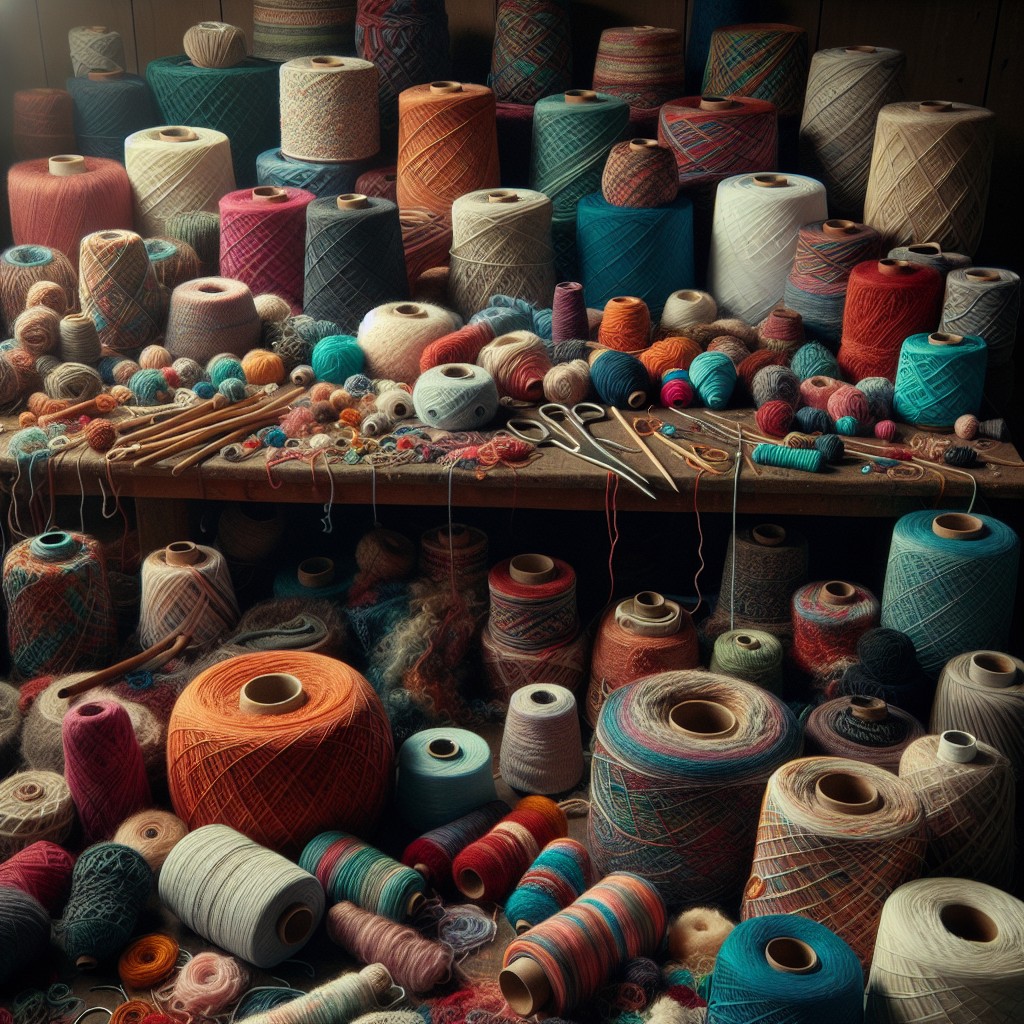
Firstly, spools are easy to use and store. They come in compact sizes that can fit into small spaces, making them ideal for crafters with limited storage space.
Secondly, spooled yarns are less likely to tangle compared to skeins or hanks of yarn since they have been wound tightly around the spool.
Another advantage of using spooled yarn is that it allows you to work on larger projects without having to stop frequently and change your thread source. This means you can focus more on your project rather than worrying about running out of thread mid-way through.
Lastly, many manufacturers produce their high-quality threads in cone form before winding them onto smaller bobbins or spools for retail sale purposes; therefore purchasing a cone may be more cost-effective than buying multiple smaller balls or skeins.
The Cons of Spooled Yarn
One of the main disadvantages is that spools can easily tangle and create knots, which can be frustrating to unravel. When using a spool of yarn for larger projects, you may need to frequently stop and change out the empty spool for a new one.
This interruption in your crafting flow can be time-consuming and disrupt your creative process.
Another disadvantage of using spooled yarn is that it often comes in smaller quantities than cones or skeins. This means you will need to purchase more individual units of yarn if you plan on working on larger projects or creating multiple items with the same colorway.
How Much Yarn On a Cone
Yarn cones come in different sizes and weights, so it’s essential to know what you’re looking for before making a purchase.
The amount of yarn on a cone can vary depending on the type and weight of the thread used. For example, some cotton or silk threads may have more yardage per pound than wool or acrylic fibers.
The standard size for most commercial cones is around 1-2 pounds (16-32 ounces) but can range from as little as 4 ounces up to several pounds.
It’s crucial that you calculate how much yarn your project requires before purchasing any cone. You don’t want to run out halfway through your work! A general rule of thumb is that one pound (16 oz) will yield approximately 1600 yards if using worsted weight (#4) acrylic fiber.
What Yarn Cone Numbers Mean
The number on the cone indicates the weight of the yarn and how much yardage is on each cone. Typically, a higher number means that there is more yardage per pound of yarn.
For example, a #10 cotton crochet thread has 1,500 yards per pound while a #3 cotton crochet thread only has 150 yards per pound. Therefore, if you purchase one-pound cones of both types of threads with their respective numbers (#10 and #3), you will get significantly more yardage from the first than from the latter.
Understanding these numbers can help you determine how many cones or pounds of yarn to buy for your project accurately. It also helps in comparing prices between different brands or suppliers since they may have varying amounts on their cones despite having similar weights.
Textile Packaging
The most common types of packaging include paper cones, paper tubes, plastic cones and tubes. Each type of package has its unique features and benefits.
Paper Cones: Paper cones are the most commonly used form of textile packaging for yarns. They come in various sizes and shapes depending on the weight or length of the yarn they contain.
Paper is a sustainable material that can be recycled easily after use.
Paper Tubes: Similar to paper cones, these cylindrical-shaped packages offer more stability than their cone counterparts due to their flat base design which makes them less likely to tip over during use.
Plastic Cones & Tubes: Plastic is another popular material used in making textile packages because it offers durability and protection against moisture damage compared with other materials like cardboard or paperboard pallet liners.
Paper Cones
They are made from high-quality paperboard that is sturdy enough to hold the weight of the yarn without collapsing. Paper cones have a smooth surface that makes it easy to wind or unwind the yarn without snagging or tangling.
One of the benefits of using paper cones is their eco-friendliness. Unlike plastic cones, which take hundreds of years to decompose, paper cones can be recycled easily after use.
This makes them an excellent option for crafters who want to reduce their carbon footprint.
Another advantage of using paper cones is their affordability compared with other types such as plastic ones. They are readily available in most craft stores at reasonable prices, making them accessible even for beginners on a tight budget.
However, one downside associated with using paper cone packaging is its susceptibility to moisture damage when exposed directly or indirectly over time; this may cause mold growth on your precious fibers leading you into losses if not detected early enough.
Paper Tubes
They are made from recycled paper and come in various sizes, depending on the amount of yarn they can hold. Paper tubes have a smooth surface that makes it easy for the yarn to slide off without snagging or tangling.
One advantage of using paper tubes is their eco-friendliness as they can be easily recycled after use. They are lightweight and easy to handle, making them ideal for shipping large quantities of yarn.
However, one downside to using paper cones is their durability; since they’re made from cardboard material, there’s a risk that moisture could damage them during storage or transportation.
Plastic Cones and Tubes
They come in various sizes and shapes, making them suitable for different types of yarns. Plastic cones are made from high-density polyethylene (HDPE) or polystyrene (PS), which makes them strong enough to withstand the weight of heavy-duty yarns.
One advantage of plastic cones is that they can be reused multiple times before being recycled. This feature makes them an eco-friendly option compared to paper or cardboard cones that can only be used once.
Another benefit is that plastic tubes provide better protection against moisture than other cone materials like paperboard or cardboard. This means your precious skeins will remain dry even in humid conditions.
However, one downside of using plastic cones is their impact on the environment when not disposed of properly. It’s essential to recycle these materials after use instead of throwing them away as waste since they take hundreds if not thousands of years to decompose fully.
Textile Wax
The wax coating helps to protect the yarn from dust and moisture during storage or transportation. It also makes it easier for the yarn to unwind smoothly without tangling or breaking.
The textile industry uses different types of waxes depending on their specific needs. Some waxes are made from natural materials like beeswax, while others are synthetic blends designed for specific applications.
When choosing a wax-coated cone for your project, consider the type of fiber you will be using as well as its intended use. For example, if you plan on dyeing your yarn after weaving or knitting it into a garment, choose an unwaxed cone so that the dye can penetrate evenly throughout each strand.
Yarn Pallets – Plastic
They are lightweight, durable, and easy to handle. Unlike wooden pallets that can splinter or break over time, plastic yarn pallets offer a long-lasting solution for storing and transporting large quantities of yarn cones.
These types of pallets come in various sizes to accommodate different cone dimensions. They also have built-in dividers that keep the cones organized during transport or storage.
One significant advantage of using plastic yarn pallets is their resistance to moisture damage. Unlike paperboard liners used in traditional wooden crates, these plastic liners do not absorb water from the environment or cause mold growth on your precious fibers.
Moreover, they can be easily cleaned with soap and water after use without worrying about warping or rotting like wood-based alternatives.
Paperboard Pallet Liners
They provide a protective layer between the yarn cones and the pallet, preventing damage during transportation. These liners are made from sturdy paperboard material that can withstand heavy loads without tearing or breaking.
One of the advantages of using paperboard pallet liners is their eco-friendliness. Unlike plastic materials, they are biodegradable and recyclable, making them an excellent choice for environmentally conscious crafters.
Another benefit is their affordability compared to other types of textile packaging materials such as plastic cones or tubes. Paperboard pallet liners come in various sizes to fit different types and quantities of yarn cones on a single palette.
If you’re looking for an affordable yet reliable way to transport your yarn cone collection safely, consider investing in paperboard pallet liners. Not only will they protect your precious crafting supplies during transit but also help reduce environmental waste by choosing sustainable options over non-biodegradable ones like plastics!
FAQ
What are the different types of paper cones?
Answer: The different types of paper cones include 1-degree 51-minute, 5-degree 57-minute, 3-degree 30-minute, 3-degree 51-minute, 4-degree 20-minute, 9-degree 15-minute, 9-degree 36-minute, and 7-degree 22-minute cones.
What are yarn cones for?
Yarn cones are designed to hold great lengths of yarn, allowing for projects like baby blankets to be knitted with just one skein.
What are the 3 major yarn categories?
The 3 major yarn categories are Animal Fibers, Plant Fibers, and Synthetic Fibers.
What are the categories of yarn?
Answer: The categories of yarn are 0-lace, 1-super fine, 2-fine, 3-light, 4-medium, 5-bulky, 6-super bulky, and 7-jumbo.
What are the various materials used for manufacturing yarn cones?
Various materials used for manufacturing yarn cones include paper, plastic, and metal.
How does the cone shape benefit yarn storage and usage?
Cone-shaped yarn storage benefits yarn usage by facilitating a smooth and tangle-free unwinding process.
What are the factors to consider when choosing the right yarn cone for a specific project?
Answer: When choosing the right yarn cone for a specific project, consider factors such as the type of fiber, yarn weight, color, and the durability and softness required for the project.
